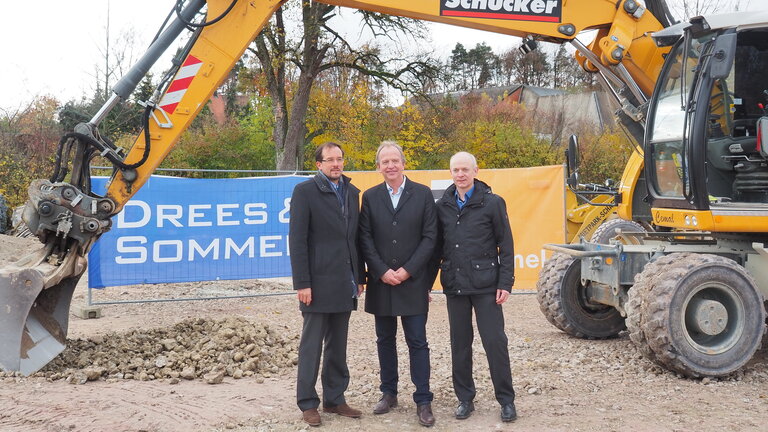The company states that the ‘energy-plus building’ is designed to generate more energy during operation than it consumes. A newly developed high insulation façade structure, photovoltaic installations on the roof and the south façade, geothermal energy from geothermal bore holes and a vegetated northern façade are the main features which ensure a demonstrably positive energy footprint for the building, which also aims to be a model demonstration object for potential construction clients. The architecture was designed by SCD Architekten Ingenieure GmbH from Stuttgart.
To ensure a sustainable use of resources and minimize the amount of waste as far as possible, the Drees & Sommer experts will apply the Cradle to Cradle method for large parts of the building. This approach stands for a recyclable process by which building materials can be reused for high quality purposes after any later demolition of buildings, or can be fully degraded in a biological recycling process. Detailed information about the materials used in new constructions and their chemical properties is provided by a materials certificate which is issued before construction work begins.
Demonstrating future-proof topics in construction
For Drees & Sommer’s Executive Board Member Steffen Szeidl, it is essential for the company to test and use forward-looking concepts in construction: ‘We advise clients on digital, flexible and efficient ways to plan and construct buildings and to operate them intelligently, paying strict attention to eco-friendliness. The best way to prove what methods are successful and economically viable is to demonstrate them by our example.’
Digital technology makes construction easier and relieves the strain on employees
Planning and construction is carried out with digital methods such as Building Information Modeling (BIM) and Lean Construction Management (LCM) for Lean Building Processes. As far as possible, industrially prefabricated modular components are used. The various parties to the building process enter the details for their trades into a digital BIM model before their work on the building site begins. The three-dimensional image thus not only contains data on various details such as materials, costs or fire safety, it can also be used for virtual simulation and testing of the building, assembly or deadline processes. This means that conflicts in the planning or construction can be detected at an early stage and remedied in advance before they become expensive.
The new building will also permit a demonstration of the use of the planned digital technologies which will make life easier for employees, clients and service providers in the later operation of the building. Apps can be used, for example, to grant access permissions, to book conference rooms or parking spaces and to adjust the settings of the heating, cooling, ventilation or lighting automatically to meet the individual needs of the different office users.
Currently, more than 850 of the total of 3,300 staff members of the Drees & Sommer Group work in the corporate headquarters in Stuttgart. Last year, Drees & Sommer generated sales of EUR 425 million and achieved an operational result of EUR 48 million. The 40 Partners of the shareholder consortium Drees & Sommer – who have equal rights and hold shares in the company – all bear the same responsibility for the company's success.
